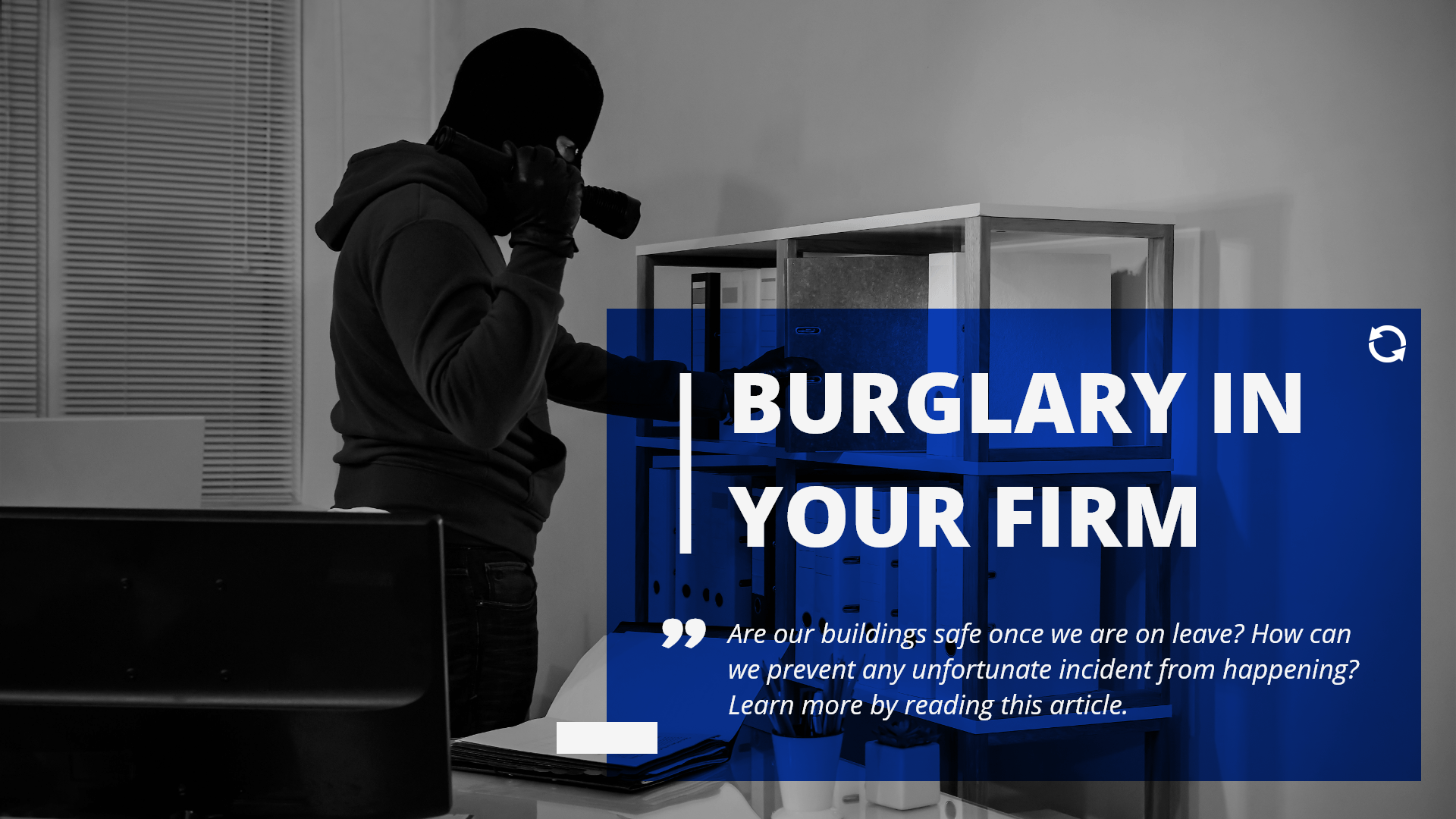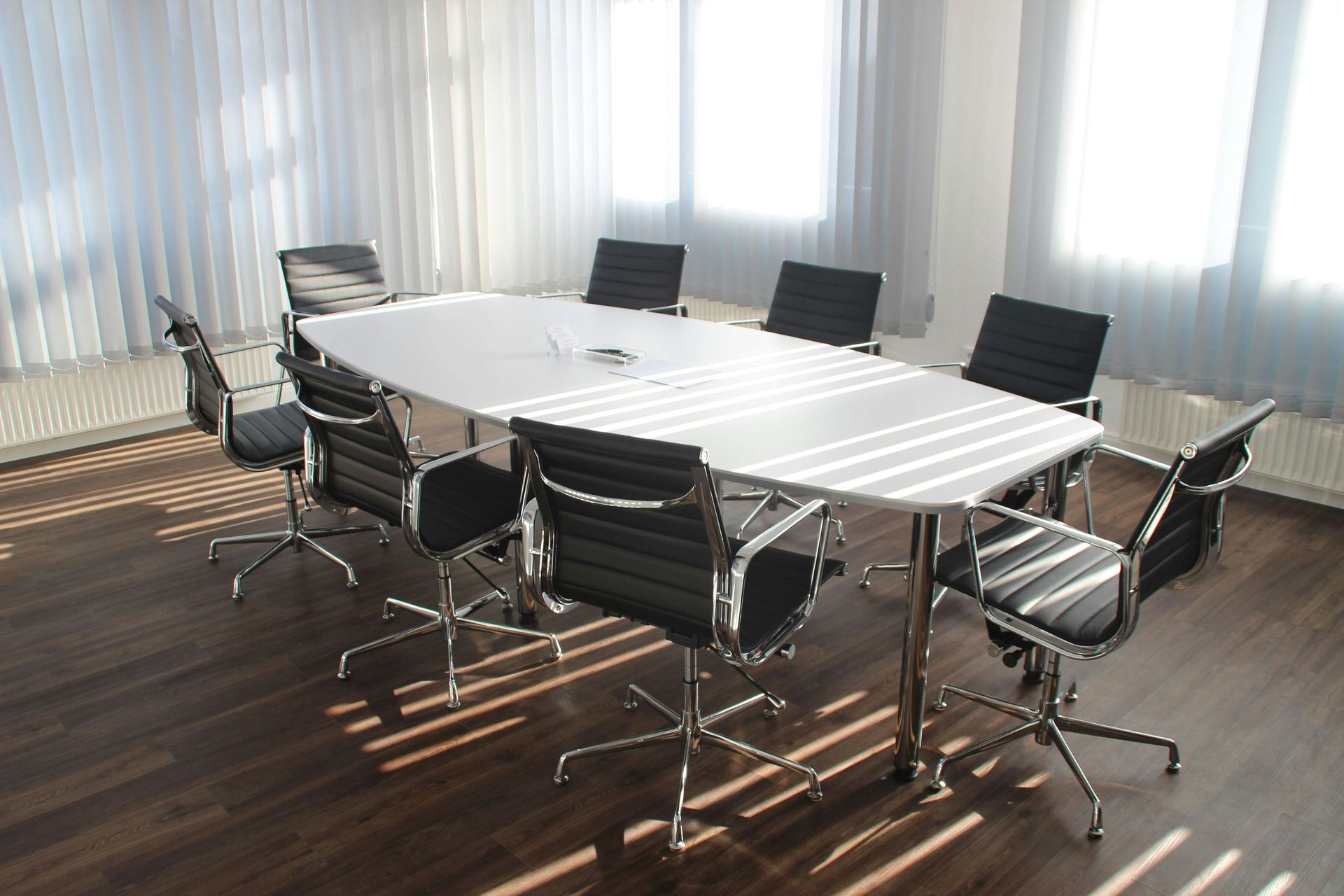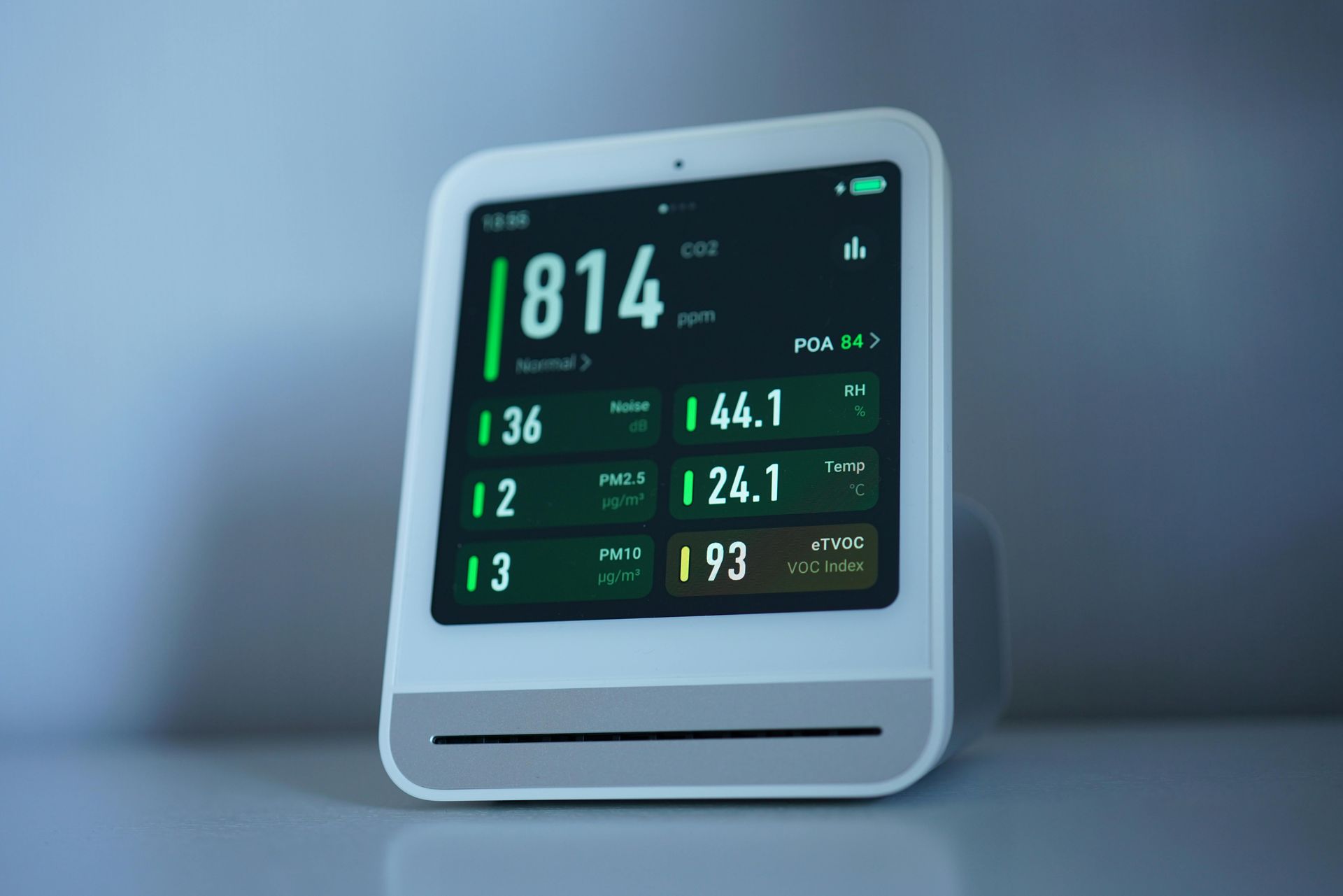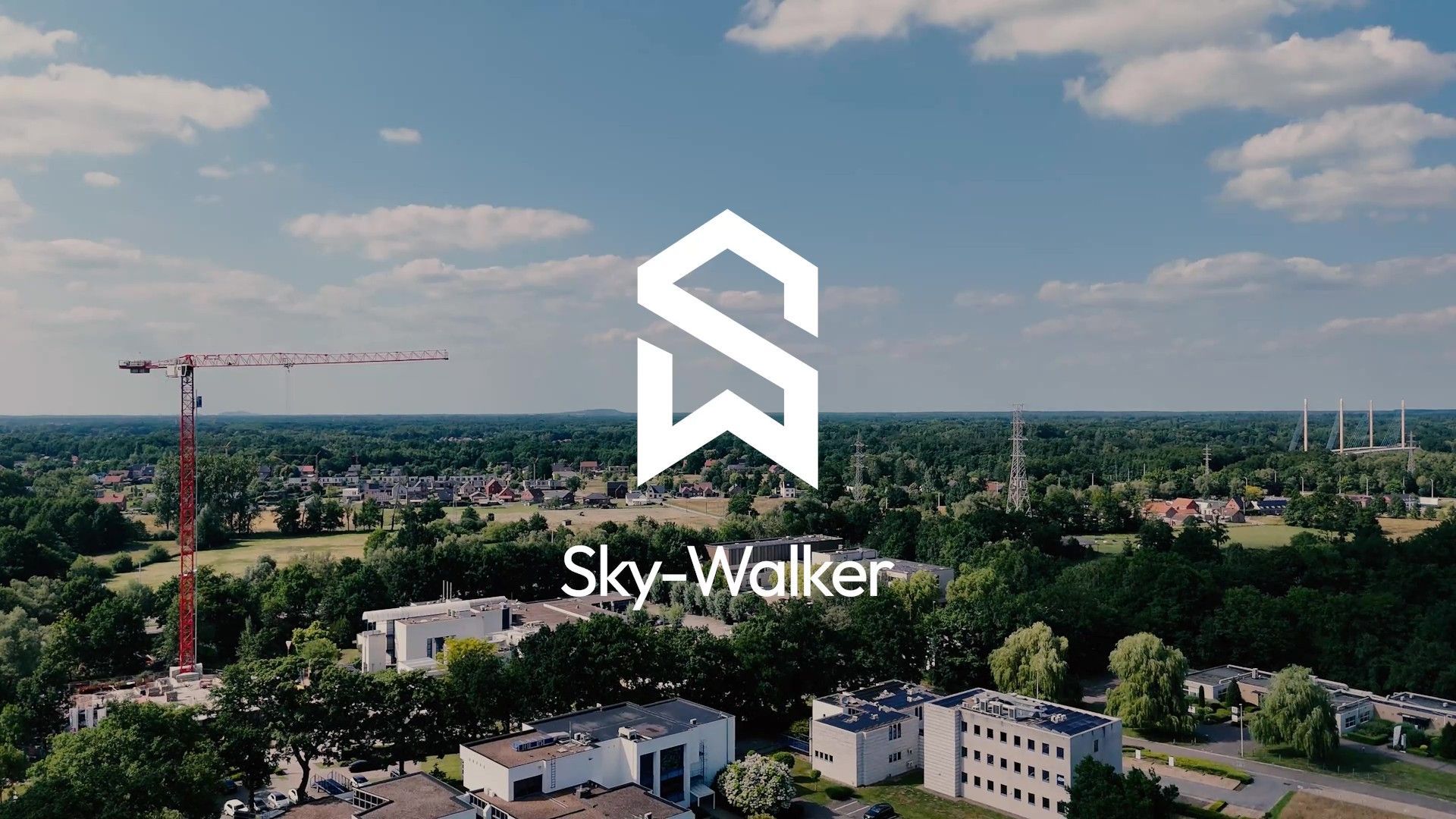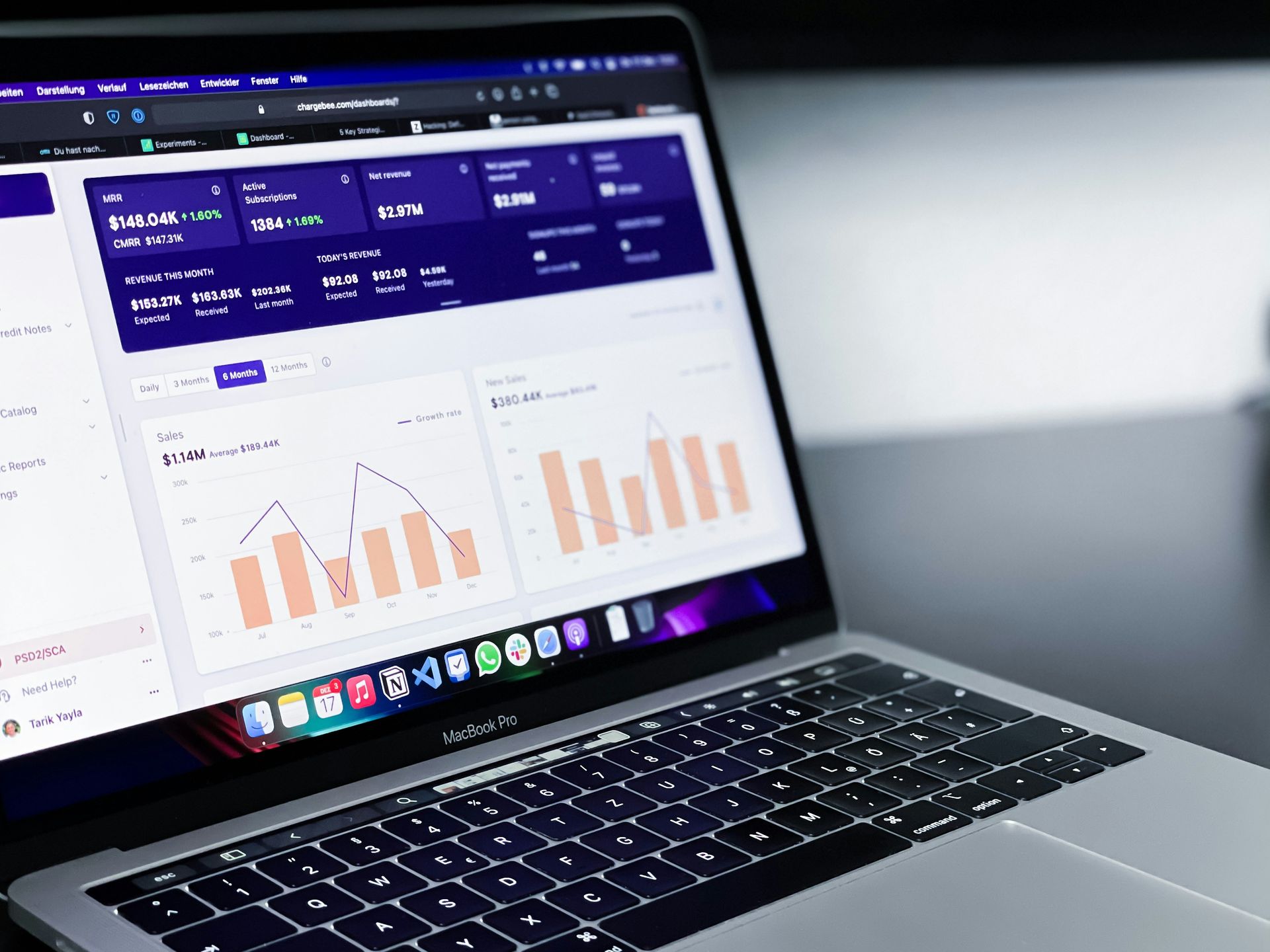Is the company secured when we are on leave?
Burglary in your firm.
Certain occurrences may compel a company's doors to close, either temporarily or permanently. Businesses always close after their regular business hours. In short, while your area is vacant, the danger of a burglary increase.
Businesses and buildings are less active in times of crisis or during the holidays and this might raise the danger of having criminal activity.
Burglary is defined as having a criminal breaking into a building, commercial premises, office, or showroom outside normal business hours. You certainly do not want to experience such criminal activity even if you cover your company with the proper policy on insurance. To safeguard your business property, you must secure it and discourage malicious people from breaking in. Not long ago I heard a story about a break-in at a company. Unfortunately, such acts happen regularly and sometimes with major consequences. In this blog, we focus on how burglary can be prevented thanks to the use of access control management and other various ways.
1. Various ways to prevent a break-in
Ensure that procedures are clear
You may want to learn about key management. It can be easily implemented by making a list of users and access points so that you can keep key management under control. You don't just hand over the keys to your automobile to anyone, do you?
Once you leave a space of any kind make sure all doors and windows are locked.
The whole outer shell must be hermetically sealed, especially in buildings where no one is present at night (such as stores and offices).
Establishing ground rules for entering and locking the property, may save you one day.
It is important to clarify what the first person on the grounds in the morning should do. Make guidelines for entering and closing the premises as a group so that thieves have no chance!
Structural measures
In addition to organizational measures, a lot goes wrong with structural measures. Many so-called burglary techniques are very easy to prevent with well-thought-out compartments and approved locks. make sure you have good locks. To get the exterior shell and compartment separation right, your locks need to be in order.
Environmental measures
By making the area around your business uncluttered, you reduce the chances of burglaries. This means that it is better to make the surrounding of your building surveyable. It is better to remove bushes and trees in a radius of 1 meter around the premises. Provide good lighting around the premises and remove tools for burglars to use or climb on, such as ladders or containers.
2. Access control is essential to keep your building safe
Increased Security
Further security solutions are including fully integrated systems that include access keys to more expensive pieces of equipment, such as computers, or which employ security cameras. Imagine an unwanted party having access to a key card for the employee. They can use this card to gain entry to an area where they should not be, but their appearance can be recorded by monitored security cameras. This in return can be used to help authorities who want to catch pursue the ones who trespass.
Identity Management
Personal identity is the centerpiece of access control and its key purpose in most cases. An effective access control system will establish who enters (or leaves) a controlled area so that at any given time the security team knows the status of the site. This is the first line of defense against intrusion or theft and this is critical when valuable objects (physical products or sensitive data systems) are present.
Efficiency
Energy efficiency is common with the use of access control. The integrated system will alert the environmental and business structures when a person is allowed access to services such as lighting and heating/cooling is required.
The access control device can also offer greater time efficiency by alerting staff that a team member has arrived in the building or that a guest is waiting in the reception area. This makes it much easier for workers to schedule their time, and not waiting for customers/visitors.
Risk/Compliance
Ensuring the upholding of risk and compliance rules is another key benefit of using integrated and automated security. As incidents occur, the Security Manager can be alerted to any potential problems as well as receiving accurate and simple reports about past incidents.
3. A big advantage
4. Systems that can be integrated with access control systems
CCTV systems
There are several advantages to incorporating access control with CCTV. Firstly, the device will utilize a pan tilt zoom (PTZ) camera when someone unlocks a door. Then, the camera will point to the particular door and start recording. It may also alert a camera when the door opens to start recording at a higher frame rate. It is possible to access CCTV footage through the Access Control software with most systems. When a person opens or unlocks a door, or leaves it open, operators can also receive email and text notifications.
Building management systems
Essentially, any result can be specified to any trigger. This also allows anyone to integrate his/her Building Management System (BMS) access control system. When the first member of staff enters the building in the morning the BMS may be averted thanks to the access control system. Then the BMS can switch all lights, heating, or air conditioning on. The system also allows to switch them off when the access control system locks in at night, saving time, energy, and money.
Intruder alarm integration
It is less common to combine access control with an intruder alarm but it is not without benefits. It is customary to authorize some staff members to deactivate the intruder alarm. If there is an integration with the intruder alarm and the access control system, the only way to unlock the doors is to disarm the alarm. If one of the approved staff members has not arrived the access control system does not operate for others.
5. What can Sky-Walker offer for access control integration?
This relates to the physical safety of buildings, people, and assets, as well as to the protection of information, network, and telecommunication systems. Traditionally, Physical Security Information Management (PSIM) software provides a platform to integrate multiple security subsystems and devices, which it controls through one Graphical User Interface (GUI). This is possible with our Sky-Walker open integration platform.







 Download Product Ebook
Download Product Ebook View all our solutions
View all our solutions Sky-Walker Architecture
Sky-Walker Architecture View all our integrations
View all our integrations Book Protocol workshop
Book Protocol workshop Our Company
Our Company Contact Us
Contact Us View All Our Case Studies
View All Our Case Studies Become a PSIM Partner
Become a PSIM Partner Become a Sky-Walker PSIM partner today!
Become a Sky-Walker PSIM partner today! English
English Français
Français Nederlands
Nederlands